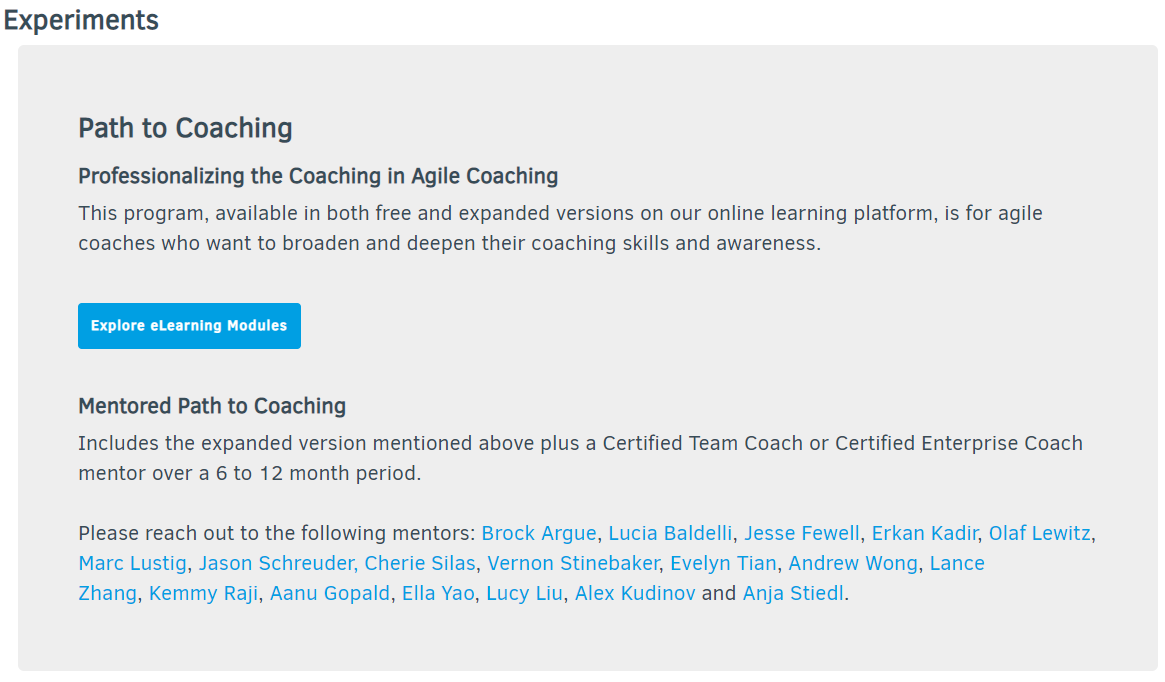
“Systemic Coaching is a process by which a team coach works with a whole team, both when they are together and when they are apart, in order to help them both improve their collective performance and how they work together, and also how they develop their collective leadership to more effectively engage with all their key stakeholder groups to jointly transform the wider business.”[1]
In the domain of systemic coaching, we find several approaches that we will draw from as a toolkit to support you as an Agile Coach when entering the system.
To help position entering the system as a concept, think of it as the work you do as Scrum Master when launching a new team and when you enter a new organisation as a consultant. This is a combination of both.
You are not a consultant, but most of us are familiar with the “selling part” of consultancy. In coaching, we call this part partnering because we couldn’t be bothered with selling anything.
The Scrum Alliance labs has a wonderful series to transition Scrum Masters from their CSP-SM to Coaching, where they introduce much of what we discussed by way of what coaching has to do with Agile coaching, and also introduces systemic coaching. Check it out here. Note that you’ll need active membership with Scrum Alliance to access it, and it’s FREE!
[1] Hawkins, P. (2014). Leadership team coaching: Developing collective transformational leadership (2nd ed). KoganPage


How to enter the system
How to Enter the system requires some finesse. Instead of selling you are partnering with the client to understand their challenges, their needs, and what has caused the vacuum for them to reach out for support.
Workshop with them to help put words to this – it’s usually a challenge positioned in terms of symptoms, rather than the core of the problem. Both internal and external factors may come to light, which exert some kind of pressure on the system that the system is not responding to in an appropriate way.
Doing a divisional / value stream / team of teams retro might reveal this: a lean coffee or something like Thinking Environment, Constellations, World Cafe or other collective participation and systemic revealing tools might work.

Who to converse with?
Firstly, you want to speak to , or identify the most likely sponsor in the system. This will be a leader in the program, or portfolio level that has a specific need. On rare occasion it might be several leaders seeking support together.
The idea here is that once you understand the need,you ask them who else to invite that will meaningfully make a difference in helping to understand the problem, and has influence on the structure of the system because of their influence or authority.
What do we mean by structure? This is related to the actual structure of teams and reporting lines or networks of people; how communication works; policies, processes and procedures; systems architecture and how it influences planning and design; calendar events; invitations to these; feedback cycles etc.
Structure influences Culture, Culture influences Leadership and Leadership influences Structure.
Who you then invite next, are the team leaders for example, or other seniors that the leaders you have brought together already, identifies need to be involved next.
PRINCIPLE: When working systemically, you work with everyone in the system.
PRINCIPLE: When entering into a system, ask who else to invite that can influence the structure in a meaningful way.
In Program level or Team level, you follow the same principles, partnering with the leader to understand their needs, and then bringing in more people into the room.
Interviews are also useful and you might choose to interview a few people from different teams. Why this is important we will discuss in the next chapters.


Reveal the system to itself
One of the competencies of a systemic coach is to reveal the system to itself. Remember that in coaching, unlike therapy and counseling, we do not diagnose; unlike consulting we do not focus on the problem and how the past made the present wrong.
We believe that the system is already working in balance, it already has everything it needs to solve its own problems, and it already has relationships and systems in place that serve its primary purpose (whether that is apparent to the members of the system or not).
When we reveal the system to itself, we use large-scale, or team facilitation techniques to help all participants of the system speak to specific areas of importance. When you do this, members of the system become aware (a coaching core competency) of their present, and then are able to choose their desired future collectively.
PRINCIPLE: We help people understand the dynamics of their systemic entanglements by creating awareness from the coaching stance. We do not diagnose.
When we see what is happening in the system, we do not diagnose – we instead, check to identify if there is any information, training, or mentoring that might be useful to generate options for them by creating awareness. If so, we contract with them on how to go about providing that, and then check in with them on which options they have an appetite for. This process continues.
Other tools like Stakeholder analysis, process flows, Value Stream mapping, and Systems Constellations are also useful. Remember to work with multiple-ontology-orientation to the system, not just the processes and procedures.
In order to do this successfully, we need to first work with the human system.
Creating the container
Once we have contracted or partnered, and before we reveal the system to itself, we first create the container for human interaction to start emerging and finding ways to relate to one another dynamically. In the past, Agilists and Project managers referred to this as a “team launch,” “project launch” or “working agreement”. The important difference between Creating the Container and Working Agreements is that the latter is not systemically oriented, while the former is.
When creating agreements systemically, the system is far more likely to continually engage in the work of revealing the system to itself, and aligning what emerges. In setting up working agreements or team launches, the work stays in the meeting in which it was originated, and dies there.


